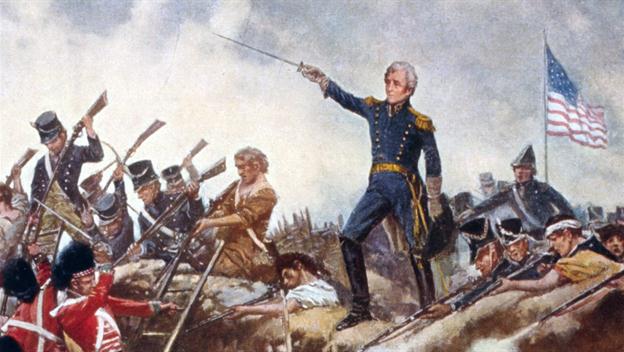The Industrial Revolution marked a pivotal moment in human history, characterized by an era of unprecedented technological advancements and significant geopolitical transformations. Sparked by the gradual accumulation of innovations, most notably the steam engine, this revolution pushed humanity into a new age of mechanization, replacing human muscle with machine power. This transition not only revolutionized industries but also significantly reshaped societies, economies, and the conduct of war. The advent of steam-powered machinery transformed production on an unimaginable scale. Industries could now produce goods at scale which was previously impossible. This industrial upheaval strongly reflected across governance and societal structures. The economic wealth generated by industries allowed nations to strengthen their economies, state institutions – including military, irrespective of the volume of their natural resources.
Initially, the implications of the Industrial Revolution for warfare were uneven and limited by traditional constraints and resources’ limitations. Military leaders like Napoleon Bonaparte demonstrated the potential of large, state-conscripted armies, but many 19th-century rulers preferred smaller, more loyal military forces. Military planners hesitated to accept new tactics and unproven technologies, constrained by deep-seated traditions, high costs of modernization, and risks of failure.
However, as the 19th century progressed, industrial advancements began to reshape the art of war and by the mid-century the Industrial Revolution in warfare took place. Key conflicts such as the Crimean War (1853–1856) and the American Civil War (1861–1865) demonstrated the devastating potential of industrial technologies.
The industrialization of warfare was most apparent at sea. Industrial empires deployed steamships, which conferred significant advantages over traditional sailing vessels. Similarly, the effectiveness of paixan naval gun was demonstrated during the Battle of Sinope (1853), where the Russian Black Sea fleet decimated an Ottoman flotilla using explosive shells with delayed-reaction fuses. Instead of exploding on impact, the shells penetrated the hull and then exploded, causing massive damage. This conflict sparked an arms race in naval technologies, with innovations in shipbuilding and weapons becoming critical. By the American Civil War, the world’s first ironclad warships, which were reinforced steam-powered vessels, had been introduced. The historic clash between the USS Monitor and the CSS Virginia at Hampton Roads showcased the transformative potential of these ships, as they battled to a standstill, proving the defensive efficacy of armor.
On land, technological advancements revolutionized the battlefield. Rifling, which introduced grooves to the barrels of muskets, dramatically increased the range and accuracy of firearms. The subsequent invention of breech-loading rifles allowed soldiers to reload faster and more safely, enabling rapid and accurate firing. These innovations made warfare deadlier, rendering traditional cavalry charges obsolete. Artillery also underwent a transformation. Breech-loading steel artillery became faster, lighter, and more mobile. The industrialization of armaments allowed for mass production, enabling armies to equip vast numbers of soldiers efficiently. Yet, military leaders were slow to adapt their tactics to these technological changes. The Crimean War and the American Civil War bore grim testimony to this reluctance. Out-dated frontal assaults against fortified positions equipped with gatling guns, resulted in staggering causalities.
The Industrial Revolution also gave rise to the concept of Total War, where the full resources of a nation—its industry, economy, and population—were mobilized for military purposes. Railroads became a key component of this new approach, enabling rapid troop movements and the efficient supply of armies. The Prussian Army demonstrated the strategic value of rail transport during the Franco-Prussian War (1870–1871), deploying 400,000 troops by rail in mere weeks. Factories far from the front lines mass produced weapons and supplies, making civilian industrial workers integral to the war effort. This interdependence blurred the lines between civilian and military targets, making entire nations potential victims of war.
By the early 20th century, the convergence of industrial technologies set the stage for the First World War (1914–1918), the first conflict fought on a fully industrialized scale. Defensive technologies, such as trench systems, barbed wire, and machine guns, proved devastatingly effective. The introduction of new weapons like poison gas, tanks, and airplanes marked the beginning of modern warfare. The war demonstrated the critical role of industrial capacity in determining the outcome of conflicts. The Allies, augmented by the industrial might of the United States, were able to outproduce and outlast the Central Powers, highlighting the decisive advantage conferred by industrial superiority.
Similar trend was observed in Second World War. Industrial military production was a decisive factor in World War II, enabling nations with robust industries, like the United States and the Soviet Union, to sustain prolonged campaigns and outproduce their adversaries. The U.S. served as the “Arsenal of Democracy,” manufacturing vast quantities of aircraft, tanks, and ships, supporting both its forces and its allies. The Soviet Union’s relocation of factories eastward ensured rapid production of light as well as heavy weapons like the T-34 tank, crucial on the Eastern Front. In contrast, Germany’s inefficient production and vulnerability to Allied bombing hindered its war effort, while Japan’s limited resources and industrial capacity left it unable to compete with American output, especially in the Pacific. This industrial arms race not only supplied the tools of war but also became a strategic target, demonstrating the critical link between production capacity and military success.
Today, the legacy of industrial warfare persists, as seen in conflicts like the Russia-Ukraine War. Industrialized military production has allowed Ukraine to leverage unmanned combat systems, drones, and precision weaponry, many sourced from industrialized allies, to counter Russia’s traditionally larger military. Similarly, Russia has employed mass-produced artillery, tanks, and missiles reminiscent of industrial-age warfare. The war also highlights the importance of industrial resilience, as Ukraine’s and Russia’s military strategies rely on maintaining supply chains for weapons, ammunition, and fuel, a direct legacy of industrialized warfare. In nutshell, The Industrial Revolution forever changed the nature of warfare, transforming it into a mechanized and industrialized endeavor with devastating consequences. Innovations in production, transportation, and weaponry revolutionized military strategies and tactics, enabling conflicts to be fought on an unprecedented scale.
Table of Contents
ToggleAhmad Ibrahim
Author is Research Associate at Pakistan Navy War College, Lahore.












